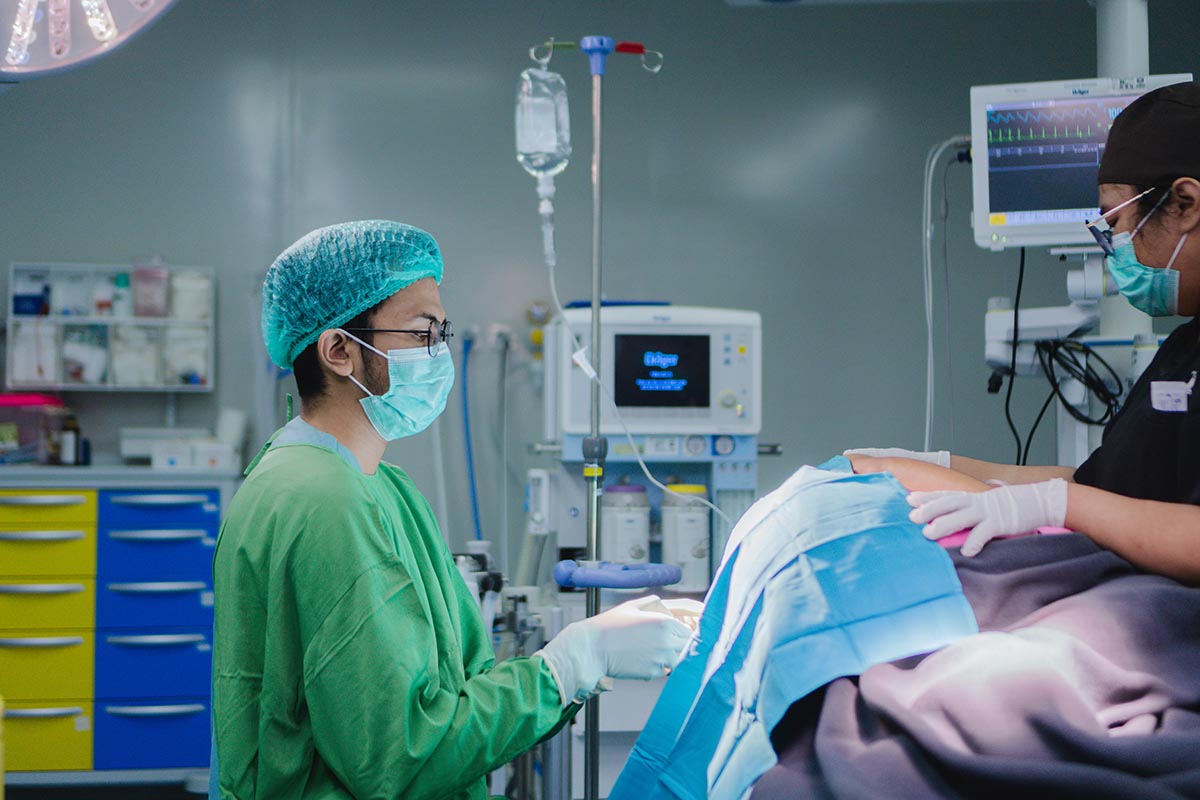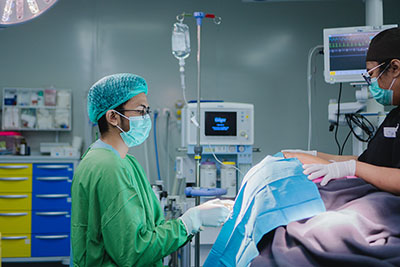
Your Health Solution
dokter anastesi, Anesthesia, anastesi, rumah sakit kenak medika, hospital ubud, ubud hospital, best hospital ubud, kenak medika hospital ubud, kenak medika
Anesthesia is a Central Part of the Medical World

Oct 13, 2025
blog-writer
Anesthesia is a Central Part of the Medical World
Anesthesiologists Play a Strategic Role in Modern Healthcare

Anesthesia is one of the most essential aspects of modern medicine — often unnoticed by patients, yet it plays a major role in almost every medical procedure, especially those performed in the operating room. At Kenak Medika Hospital Ubud, the role of the anesthesiologist is a key factor in ensuring patient safety, comfort, and the overall success of medical procedures.
Without anesthesia, no surgical or invasive medical procedure could be performed safely and comfortably.
Many people still wonder — what exactly is anesthesia? How does it work? And is it the same as being sedated or “numbed”? To better understand the crucial role of anesthesia and the professionals behind it, let’s explore this topic further.
What is Meant by Anesthesia ?
In simple terms, anesthesia is a medical action performed to eliminate a patient’s pain or consciousness during certain medical procedures. The word “anesthesia” originates from the Greek word anesthesia, meaning “without sensation.” With anesthesia, patients can undergo surgery or medical treatments without experiencing pain or extreme discomfort.
However, anesthesia is not merely about “putting a patient to sleep.” The process involves precise dosage calculations, continuous monitoring of body functions, and careful supervision by an anesthesiologist. At Kenak Medika Hospital Ubud, the anesthesia team works under high safety standards, using advanced medical equipment and international medical protocols — ensuring every patient receives maximum protection throughout their procedure.
How Does Anesthesia Work ?

Many assume anesthesia simply makes patients “fall asleep” during surgery. In reality, its function is much more complex. Anesthetic medications work by affecting the central nervous system, blocking pain signals from reaching the brain, and — depending on the type — also reducing the patient’s level of consciousness.
During the procedure, the anesthesiologist doesn’t just administer anesthetic drugs. They also control blood pressure, heart rate, body temperature, and breathing. The anesthesiologist monitors these vital signs every second to keep the patient’s body stable. After surgery, they also oversee the recovery process from anesthesia, ensuring that the patient regains consciousness safely and comfortably.
At Kenak Medika Hospital Ubud, anesthesia procedures are carried out with a personalized approach. This means that the type and dosage of anesthesia are adjusted according to each patient’s age, weight, medical condition, and the type of surgery being performed. This individualized approach ensures a safer and more comfortable medical experience for every patient.
How Many Types of Anesthesia Are There ?
Anesthesia comes in several types, each tailored to specific medical needs. Generally, there are three main types of anesthesia commonly used in hospitals like Kenak Medika Hospital Ubud:
-
General Anesthesia
This type makes the patient completely unconscious. It is often used in major surgeries — for example, abdominal, chest, or brain surgery. The patient is completely asleep and feels nothing during the procedure. The anesthesiologist manages the patient’s breathing using specialized equipment and monitors all vital functions throughout the operation. -
Regional Anesthesia
In this type, only a specific region of the body is numbed, such as from the waist down. Examples include spinal anesthesia or epidural anesthesia, often used in cesarean sections or orthopedic surgeries. The patient remains awake but feels no pain in the operated area. -
Local Anesthesia
Local anesthesia is used to numb a very small area of the body, such as for dental treatments, skin procedures, or minor wound care. It is typically injected directly into the targeted area, and its effects last only for a short period.
Each type of anesthesia has a different mechanism and indication, and the selection depends on the patient’s medical condition and the procedure. A pre-anesthetic consultation is essential to determine which method is the safest and most effective.
Is Anesthesia the Same as Being “Numbed” or Sedated ?
In everyday language, many people use the word “sedation” or “being numbed” to mean anesthesia. While the meanings are similar, in medical terms, anesthesia refers to a broader and more comprehensive process.
“Sedation” or “being numbed” describes the effect — loss of sensation or consciousness — whereas anesthesia involves the entire medical process, from patient evaluation and drug administration to monitoring during the procedure and post-operative recovery.
Therefore, sedation is actually part of anesthesia, but anesthesia itself is a broader medical science and practice. That’s why an anesthesiologist is not just a doctor who “puts patients to sleep” but a highly trained specialist responsible for maintaining patient safety before, during, and after surgery.
Patient Safety and Comfort Come First

At Kenak Medika Hospital Ubud, anesthesia services are provided by experienced professionals who specialize in the field. Every patient undergoes a thorough pre-anesthetic assessment to ensure there are no underlying risks. Additionally, anesthesiologists educate patients about what to expect before and after anesthesia, helping them feel calm and informed.
The hospital’s operating rooms are equipped with state-of-the-art monitoring systems that track patient conditions in real time. This approach aligns with the hospital’s commitment to providing medical care that prioritizes safety, comfort, and quality of life.
For residents of Ubud and surrounding areas who seek professional medical care, Kenak Medika Hospital Ubud stands as a trusted healthcare institution with comprehensive facilities — from modern operating rooms, ICU, and NICU, to specialized doctors who are always ready to help, including anesthesiologists who play a crucial role in every medical procedure.
Conclusion
Anesthesia is far more than just “putting a patient to sleep.” It is a vital medical science that ensures safety and comfort throughout surgical and medical procedures. The role of an anesthesiologist is indispensable in healthcare, especially in hospitals like Kenak Medika Hospital Ubud, which offer surgical services and advanced patient care.
With the right knowledge, skills, and technology, anesthesia allows patients to undergo procedures without pain — safely and in full control.
If you’d like to learn more about anesthesia services or consult directly with an anesthesiologist at Kenak Medika Hospital Ubud, you can check the latest doctor schedule through the link in our bio or the official Kenak Medika Hospital Ubud website.
Doctor Schedule and Anesthesia Service Information: Check Here
Kenak Medika Hospital Ubud — Feel Better, Get Better.
You may also enjoy

Dec 23, 2025
blog-writer

Dec 22, 2025
blog-writer

Dec 17, 2025
blog-writer

Online Appointments
Online Appointment and Prescriptions
Now, you can book a limited amount of doctors appointmentonline
© 2025 Kenak Medika Hospital. All rights reserved.
Powered by Finitree Indonesia
